|
11. Geometrical puzzle of
cryptography or linguistic symbol of words.
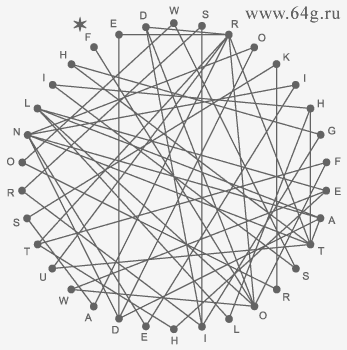
12. Logic labyrinth of alphabetic
letters or geometrical image of writing.
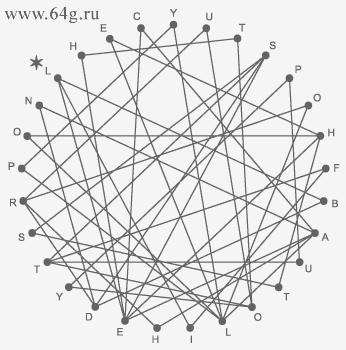
13. Linguistic linear code or
symbol of human speech in geometrical matrix of alphabet.
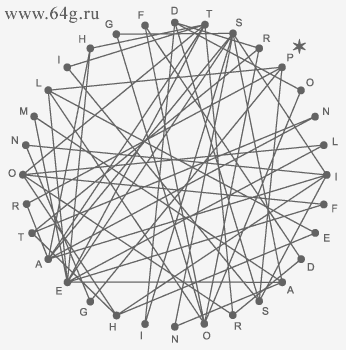
Answers of linguistic puzzles.
11. Psalm 33.4 King James Version.
12. Psalm 134.2 English Standard Version.
13. Psalm 135.3 New International Version.
Texts of the Bible can be found: www.bibles.net.
Limited numbers of words can be
considered in spatial view in a context of geometrical linguistics as
codes or puzzles, because infinite information results in possible
distortions of contents.
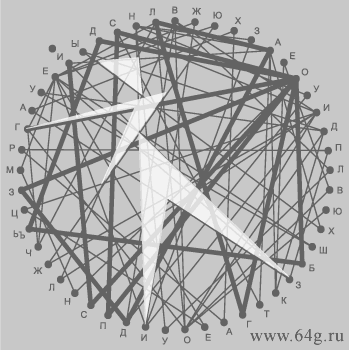
However, strange words can be considered as
secondary outside contents which can be found in primary words of geometrical puzzles
and linguistic encryptions.
|
Symbols of geometrical linguistics.
Philosophical meanings of words.
Words in a context of geometrical linguistics are graphical images or
drawings which are formed by crossings of lines or otherwise to tell
linear configurations of letters or characters of alphabet in the space
of geometrical matrix of human language, and consequently images can be
considered not only as linguistic codes and cryptograms or logic puzzles
but also as visual pictures or symbols of words.
Symbols can be peculiar only for abstract concepts or names and
denominations, but designations of real subjects or objects have actual
virtual shapes which form in consciousness of people mental associations
which are connected with these subjects or objects, and consequently
graphic images of such words by means of lines in a context of
geometrical linguistics are not perceived as symbols.
Symbols are inherent in words which express abstract ideas or names
and denominations, but designations of real material things do not
correspond with symbolical emblems.
Abstract concepts can have philosophical meanings or other senses, but
in any case if words designate non-material phenomena then graphical
images in a context of geometrical linguistics can be apprehended by
consciousness as symbols, or otherwise to tell as visual encryptions.
In total symbols of words can be very diverse, but however in human
languages there are words which possess identical symbols in view of
rules and laws of geometrical linguistics. In particular all words of
three alphabetic characters have one identical or uniform geometrical
symbol in the space of linguistic triangle.
If to consider vocabulary stock or lexical structure of English language
then it is possible to find approximate number of two tens of
three-letters words which express abstract philosophical meanings and
concepts. All these words possess one geometrical symbol which is common
and general for different philosophical meanings, but the symbol can be
differently focused in space and as a result human consciousness can
differentiate meanings and senses which are connected with different
spatial positions within measurement area of global coordinates. Namely
linguistic triangle can be differently focused in space and by that
identical geometrical symbols of words can have different philosophical
meanings and esoteric values.
For example, various philosophical meanings of words "man" and "god" can
be expressed by different directions of triangles, as shown on the
chart.
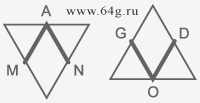
Spatial orientation of word symbols and alphabetic codes in a context
of geometrical linguistics has essential value as people perceive
outward world according to coordinates or directions which possess
different philosophical meanings,
which form in human consciousness different mental associations, which
are connected with the sky or the ground, or other spatial reference
points.
If geometrical symbols or cryptogram ciphers are presented within
linguistic triangle then there are three directions which can designate
different philosophical
meanings of words. But if
linguistic symbols are presented within three segments of a circle then
number of directions is equivalent to quantity of letters which form
words. As alphabetic characters form polygonal geometrical figures in
which images of symbol are entered, and in essence each corner of
polygons can be a direction of orientation.
It is possible to focus symbols and encryptions of words concerning
initial letters, namely it is possible to have first letters in top
points. Or it is possible to adhere to more complex rules which assume
orientation of linguistic symbols and codes according to multivariate or
otherwise to tell to polygonal ratios of semantic values and
philosophical
meanings with directions of space.
For example, it is possible to correlate segments of linguistic circle
to directions of world space according to angular coordinates of
zodiacal signs within astrological circle. As a result philosophical
meanings or other abstract senses
of geometrical symbols of words can be connected with characteristics of
zodiacal signs in astrology.
Except for spatial positions in a context of geometrical linguistics it
is necessary to consider reading directions of letters, because movement
anticlockwise or clockwise too possesses different senses in view of
human perception. Namely next letters in words according to rules of
geometrical linguistics are on different sides of linguistic triangle or
in other segment of a circle, but transition lines between letters can
be read anticlockwise or clockwise, and consequently linear
configurations of word symbols can be different.
Only after formation of possessive case there is letter which is
located on the opposite side of linguistic triangle, but arrangements of
following alphabetic signs can vary in other cases.
In geometrical codes and symbols of words on pages of this website all
images are constructed according to reading of letters
counter-clockwise, but in some cases this rule has been broken. And also
in any other cases during enciphering of words in a context of
geometrical linguistics it is possible to read letters differently.
Criterion of options for reading directions can be harmony of lines, or
otherwise tell geometrical beauty of symbols.
And also during a choice of directions it is possible to consider
ambiguous linguistic interrelations and combinations of letters, because
in complex and multi-way geometrical ratios of lines it is possible to
encipher configurations which form other words rather than original
content. Namely it is possible to create linear configurations according
to which extraneous words and phrases can be read in codes and
cryptograms.
Sequences of letters as a result can have different understanding that
is interesting as actually geometrical symbols of words and linguistic
codes are intellectual logic puzzles or entertaining conundrums.
But probability of extraneous words becomes excessive at a big number of
letters and lines in linguistic codes or encryptions, namely
multiplicity of information leads to significant distortions of
contents.
It can be seen in last image on this page.
Therefore in a context of geometrical linguistics it is possible to
consider adequate number of words in the form of linear figures if exact
reading of phrases and unequivocal understanding of
semantic values in images of
encryptions or cryptograms are necessary.
Or extraneous words can be considered as additional integral contents
and philosophical meanings of
words in linguistic conundrums and linear
labyrinths of alphabetic puzzles. Following page shows
graphical images of words or otherwise to
tell symbolical visual figures which are not logic puzzles or ciphers of
cryptography, but can be sketches for emblems and amulets, or can be
taken as mottos or slogans and catchwords which stimulate consciousness
and initiate positive emotions.
The shown graphic images are constructed according to rules of
geometrical linguistics and alphabetic order of letters on sides of
linguistic triangle. |